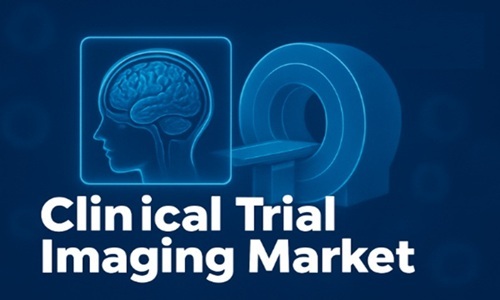In an age dominated by digital connectivity, the importance of fostering strong, vibrant local communities has never been more apparent. While online platforms enable global interaction, they often lack the intimacy and personal touch of real-world connections. Building a strong local community requires more than just shared geography; it demands active participation, collaboration, and a focus on common goals.
This article explores practical strategies for enhancing local engagement, the role of technology in strengthening connections, and how small efforts can lead to big changes within communities.
The Importance of Local Engagement
A strong local community is the backbone of a thriving society. Studies have shown that individuals who feel connected to their community report higher levels of happiness and overall well-being. According to the National Council on Aging, seniors who participate in community activities are 22% less likely to experience loneliness and depression compared to those who don’t. This underscores the value of engagement not only for individual mental health but also for the collective health of a community.
Beyond personal benefits, local engagement fosters economic growth, strengthens social networks, and empowers residents to address shared challenges. When people come together to collaborate on initiatives—whether organizing a farmers' market, creating a neighborhood watch program, or launching a cleanup drive—they develop a sense of ownership and pride in their community.
Practical Ways to Strengthen Community Ties
Building a connected community doesn’t have to involve massive initiatives. Small, consistent efforts can create a ripple effect that transforms a neighborhood. Here are some practical ways to foster stronger ties:
Host Local Events: From book clubs to block parties, events provide an opportunity for residents to meet and interact.
Create Community Spaces: Libraries, parks, and recreation centers act as hubs for connection and collaboration.
Support Local Businesses: Shopping locally keeps money within the community and supports neighborhood entrepreneurs.
Organize Volunteer Projects: Activities like park cleanups or food drives bring people together for a common cause.
Leverage Social Media: Platforms like Facebook Groups or Nextdoor can help organize events and spread awareness about local issues.
These actions may seem small, but their cumulative impact can be transformative, creating a more engaged and resilient community.
The Role of Technology in Local Engagement
Technology, often criticized for fostering isolation, can also serve as a powerful tool for bringing people together. Apps and platforms designed for community building, like Meetup or Eventbrite, make it easier to organize local events and find people with shared interests.
In addition, crowdfunding platforms enable communities to fund local projects, while digital communication tools like Slack or WhatsApp groups facilitate real-time collaboration. For example, a neighborhood might use these tools to coordinate emergency responses, organize carpool systems, or share resources like tools and equipment.
At the same time, technology must be balanced with in-person engagement. While online interactions can kickstart conversations, face-to-face meetings remain crucial for building trust and deeper relationships.
Unique Ideas for Community Involvement
Every community is different, so finding creative ways to engage residents can make participation more exciting and accessible. A great example of this is using personalized or community-branded items to promote a sense of belonging. For instance, custom keychains with a neighborhood logo or a meaningful local symbol can be distributed during events as a token of appreciation or a way to promote community pride.
Other unique ideas include:
Skill-Sharing Workshops: Encourage residents to teach skills like cooking, coding, or gardening to others in the community.
Storytelling Nights: Host events where members can share personal stories or community history.
Art Installations: Collaborate with local artists to create murals or sculptures that reflect the community's identity.
Pop-Up Markets: Set up temporary markets for local artisans, bakers, or farmers to showcase their products.
Community Challenges: Launch friendly competitions, like fitness challenges or trivia nights, to engage residents in fun and healthy activities.
These initiatives not only bring people together but also celebrate the unique character of the community.
Overcoming Barriers to Engagement
Despite the benefits of local engagement, many communities face challenges in getting residents involved. Common barriers include time constraints, lack of awareness, and feelings of disconnection. Addressing these issues requires proactive solutions, such as:
Flexible Scheduling: Offering events at various times to accommodate different schedules.
Clear Communication: Using multiple channels, including social media, flyers, and word-of-mouth, to promote activities.
Inclusivity: Ensuring events and programs are accessible to people of all ages, abilities, and backgrounds.
Recognition: Acknowledging and celebrating participants’ contributions to encourage continued involvement.
By addressing these barriers, communities can create an environment where everyone feels welcome and motivated to participate.
The Long-Term Impact of Community Engagement
Strong local communities have a ripple effect that extends far beyond their immediate borders. They contribute to safer neighborhoods, better schools, and a healthier environment. Engaged residents are more likely to advocate for local issues, volunteer for civic projects, and support policies that benefit their community.
Moreover, the bonds formed through local engagement can lead to lasting friendships and collaborations, further enriching the lives of everyone involved. These connections are especially valuable during challenging times, providing a network of support when it’s needed most.
Conclusion
Building a connected community requires effort, creativity, and commitment, but the rewards are well worth it. By focusing on small, meaningful actions and leveraging the power of technology and creativity, residents can foster stronger ties, celebrate their shared identity, and create a thriving environment for everyone.
Whether it’s hosting a local event, distributing custom keychains as symbols of unity, or organizing volunteer projects, the steps we take today lay the foundation for a more vibrant and resilient community tomorrow. Together, we can make our local neighborhoods stronger, more inclusive, and better prepared for the future.


















